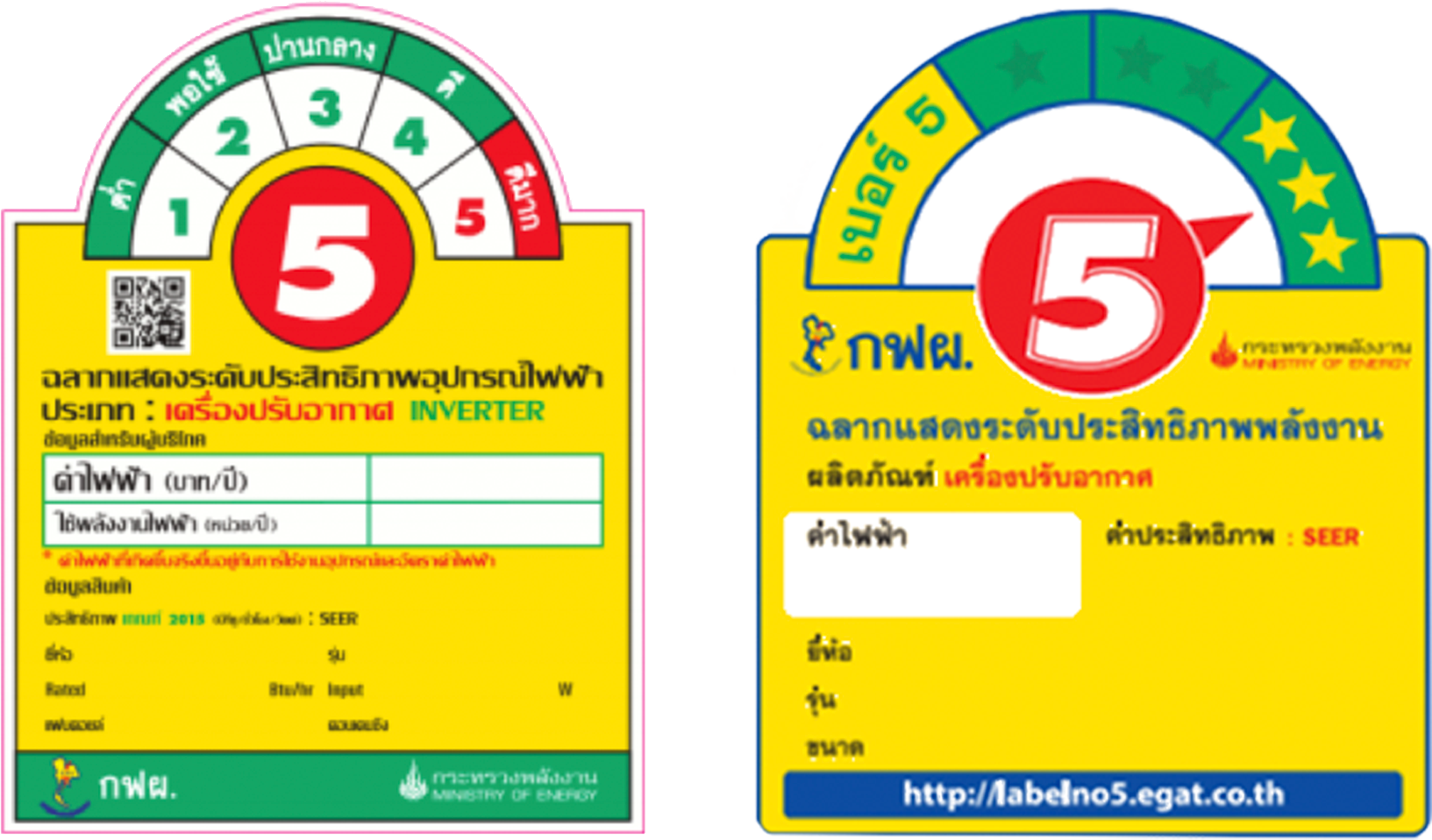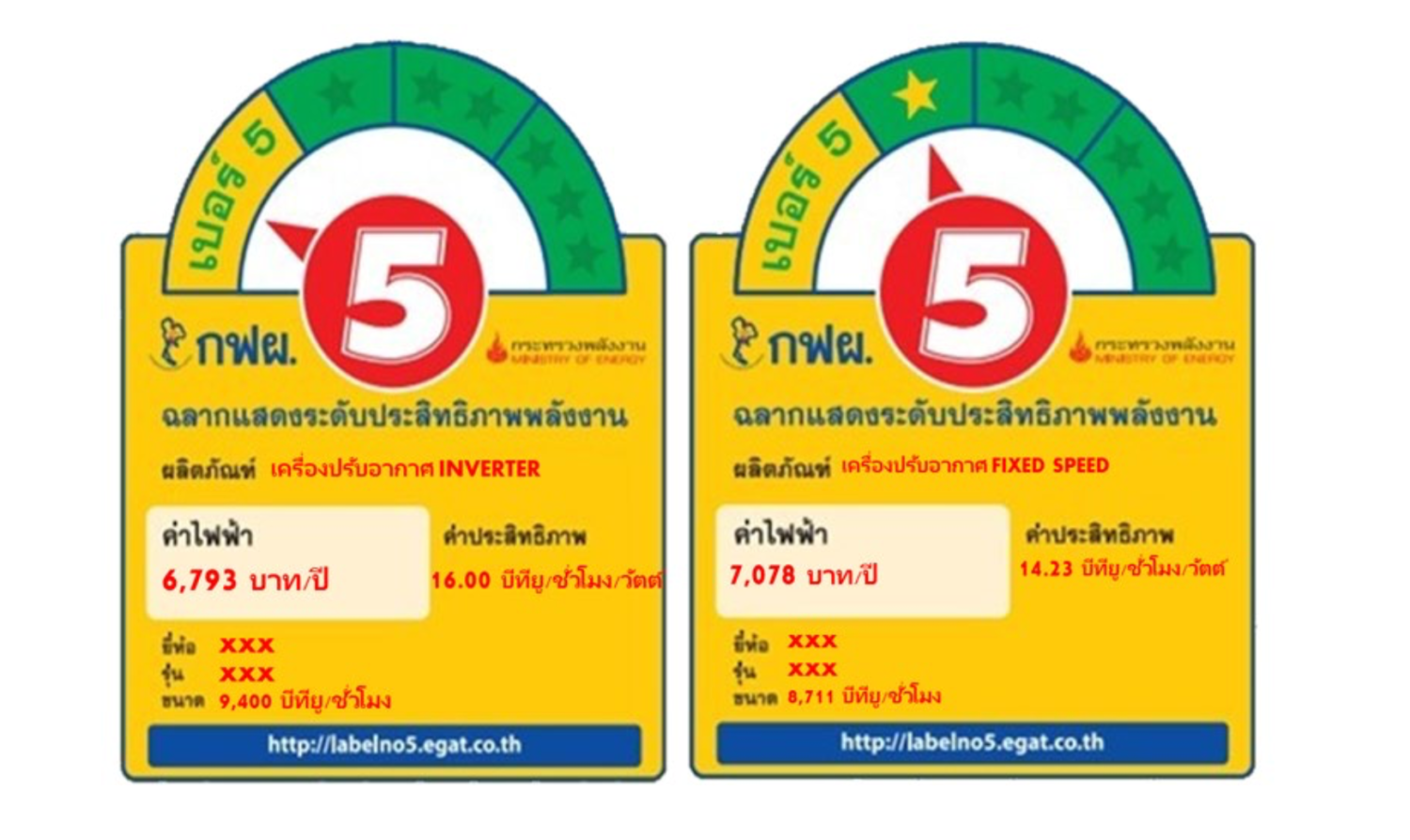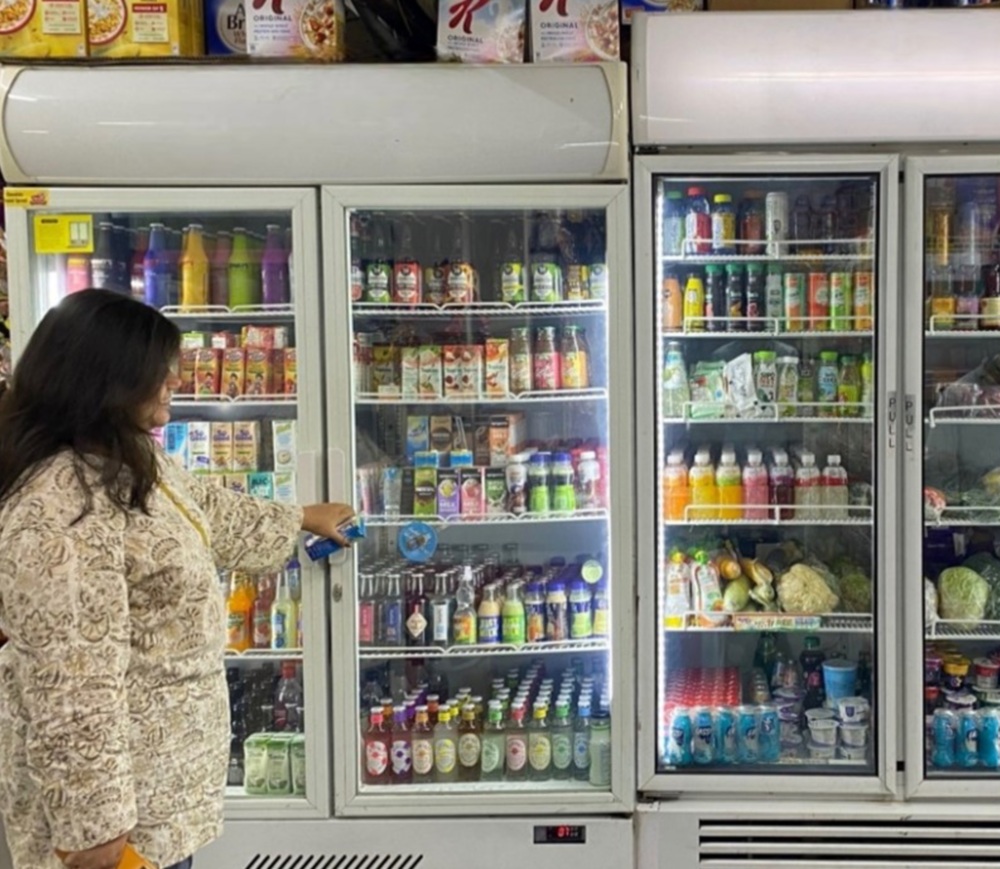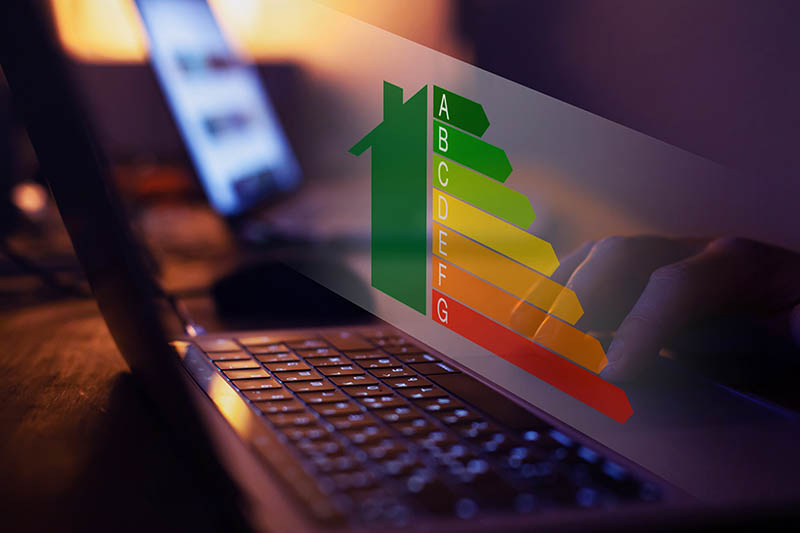Air Conditioner Labeling in Thailand: Key Findings and Recommendations
Summary
This Policy Brief presents findings from an evaluation of the Electricity Generation Authority for Thailand (EGAT) No. 5 air conditioning (AC) energy label and provides recommendations to enhance the labels' impact in driving the transition to higher-efficiency products.
Download Report
Fill out the form below to activate file downloads
Ipsos Thailand
International Institute for Energy Conservation (IIEC)
In 2020, CLASP, in collaboration with EGAT and with the support of Ipsos Thailand and the International Institute for Energy Conservation (IIEC), conducted a nationwide survey among manufacturers, retailers, and consumers to assess understanding and perceptions of the original No.5 air conditioning (AC) energy label and the new label No.5 with stars.
The EGAT No. 5 label is considered a key tool for purchasing decisions, product design and marketing strategies.
This Policy Brief presents findings from our evaluation.
Rescaling the EGAT No.5 Label
The original EGAT No.5 voluntary label, in use until 2018, featured 5 efficiency levels to differentiate product performance. However, only products that achieved the highest labeling level (No. 5) were actually labeled by manufacturers, making it difficult for consumers to differentiate among the most efficient products. EGAT rescaled the labeling criteria at the end of 2018 by replacing the previous 5 levels with a three-star rating on top of level 5 (hereafter referred to as “EGAT No.5 label with stars”) to better identify more efficient ACs. This label has been in use since 2019.

Label Evaluations
The results of the evaluation are broken down into three sections:
- Label Design and Understanding
- Label Impact on Market Transformation
- Label Program Design
Key Findings and Recommendations
The evaluation found that:
- The EGAT No. 5 label is considered a key tool for purchasing decisions, product design and marketing strategies.
- The use of stars on the new label has proven valuable to distinguish high efficiency products.
- The separate labeling rating criteria for inverter and fixed speed in AC units is confusing to consumers and does not support the sale of more efficient products.
- The estimated annual electricity cost is one of the most useful components of the label.
- The potential addition of a CO₂ icon may confuse consumers, particularly if it only covers indirect emissions.
- Although the internet is a primary source of information for consumers purchasing an AC, only 10% of online retailers display labels.

The separate labeling rating criteria for inverter and fixed speed in AC units is confusing to consumers and does not support the sale of more efficient products.
CLASP provided the following recommendations:
- Implement the same rating criteria and efficiency requirements for both fixed speed and inverter ACs.
- Develop and communicate a mid- to long-term roadmap of policy revisions to facilitate industry support and drive climate goals.
- Do not include an additional CO₂ icon on the label.
- Develop a strategy to enhance consumer understanding of the star ratings and to facilitate access to labeling information online.









